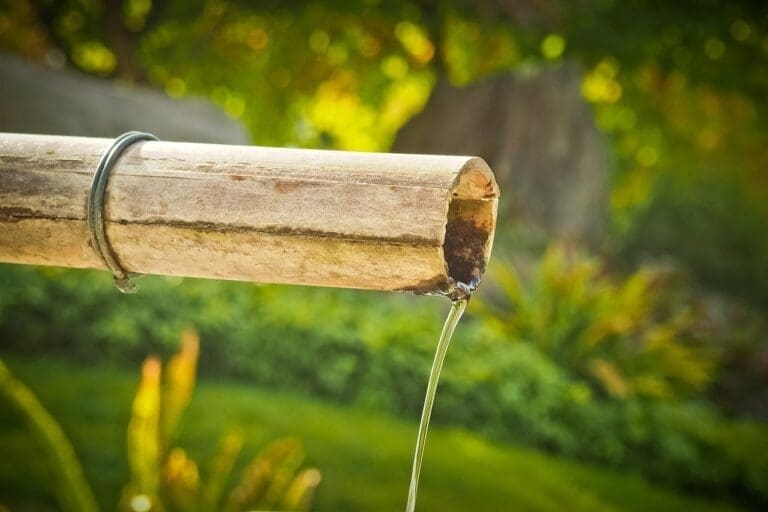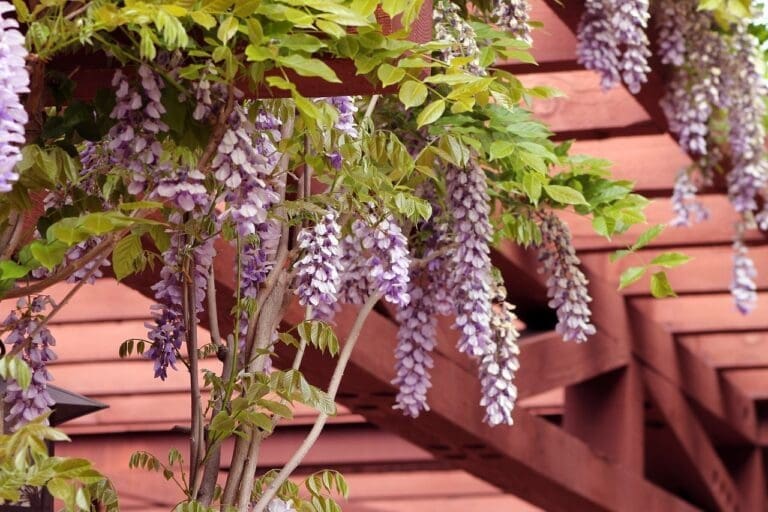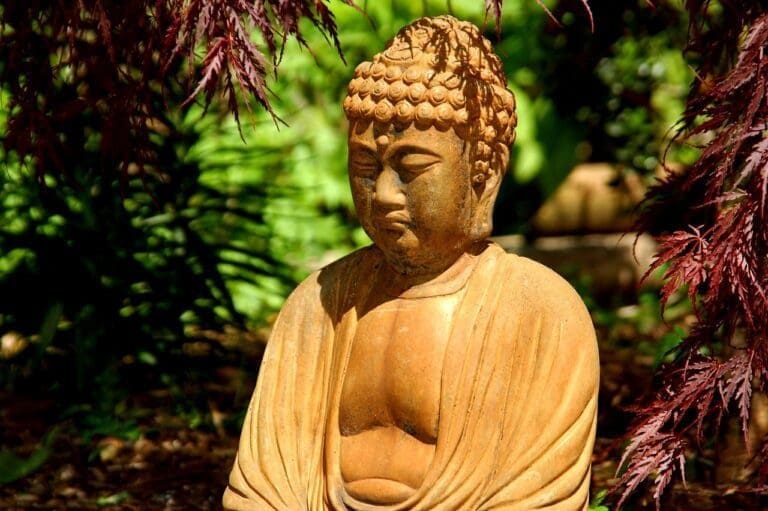A mindful garden can serve as your own personal oasis, providing an escape from the hustle and bustle of everyday life while promoting relaxation, meditation, and tranquillity.
In this post, we’ll explore the benefits of a mindful garden, the elements that make up a mindful garden, how to design your own mindful garden and plant recommendations.
This post contains affiliate links which means we may make commission from any qualifying sales with no extra cost to yourself.
Benefits of a Mindful Garden

Whether it’s your own personal space or a community project, a mindful garden can have numerous benefits for your mental and physical well-being. Spending time in nature has been shown to reduce stress and anxiety, improve mental clarity, and boost overall happiness. Additionally, spending time outdoors can have numerous health benefits, such as reducing blood pressure, improving immune function, and increasing Vitamin D levels.
• Reduces stress and anxiety
• Promotes relaxation and tranquillity
• Improves mental clarity and focus
• Boosts overall happiness and well-being
• Provides a connection to nature
• Promotes physical health through outdoor activity and increased Vitamin D levels
• Can improve immune function
• Enhances air quality with plants that purify the air
• Can provide a space for quiet reflection and meditation
• Engages the senses and promotes mindfulness
7 Elements of a Mindful Garden
To create a mindful garden, it’s important to incorporate elements that promote relaxation and tranquillity. Here are some key elements to consider when designing your mindful garden:
1. Water Features


Water features such as fountains, ponds, and waterfalls can add a sense of calm and tranquillity to your garden. The sound of running water can help mask outside noises and promote relaxation.
2. Natural Elements


Incorporating natural elements such as rocks, stones, and driftwood can create a sense of balance and harmony in your garden. By using natural materials, you can create a space that feels organic and connected to the environment.
3. Plants for Relaxation


Choosing plants that promote relaxation and tranquillity can help create a peaceful atmosphere in your garden. Here are some great plant choices for a calming garden:
Lavender: Known for its relaxing scent, lavender can help reduce stress and anxiety.
Chamomile: This plant is known for its calming properties and can help promote restful sleep.
Jasmine: Jasmine has a sweet, floral scent that can help promote relaxation and reduce stress.
Aloe Vera: Aloe Vera has air-purifying qualities and can help purify the air in your garden.
Snake Plant: Also known as Mother-in-Law’s Tongue, this plant has air-purifying qualities and can help reduce stress.
4. Meditation Areas
Creating a space for quiet reflection and meditation can be a great way to incorporate mindfulness into your garden. This can be as simple as a small seating area or as elaborate as a dedicated meditation garden.
5. Engaging the Senses
Designing a garden that engages all five senses can help promote mindfulness and relaxation. Consider incorporating scented plants, wind chimes, and textured materials to create a sensory experience in your garden.
See our related post: Creating a Sensory Garden – A Magical Sanctuary to Delight Your Senses
6. Privacy


Privacy is an important element in a mindful garden, as it can help create a sense of seclusion and tranquillity. If your garden is located in a busy area, you may want to consider adding privacy screens or fencing to create a more secluded atmosphere. You can also use plants to create a natural barrier, such as tall grasses or climbing vines. Creating a space that feels private and secluded can help you feel more relaxed and at ease in your garden. It’s important to balance privacy with open space, however, to avoid feeling closed in or claustrophobic.
See our related post: 7 Ways to Make Your Garden More Private
7. Outdoor Speakers
Outdoor speakers can be a great addition to a mindful garden, as they can help create a relaxing atmosphere by playing soothing music or nature sounds. Soft, calming music can help mask outside noises and promote relaxation. You can also use speakers to play guided meditations or mindfulness exercises, helping you to fully immerse yourself in your garden and promote mental clarity and focus. When choosing outdoor speakers, be sure to choose ones that are weather-resistant and can withstand the elements. Additionally, be mindful of the volume, as you don’t want to disturb your neighbours or detract from the peaceful atmosphere of your garden.
Designing a Mindful Garden
When designing a mindful garden, it’s important to assess the space and determine what is feasible. Creating a plan, choosing plants and materials, establishing a flow, and maintaining the garden are all important considerations. By creating a focal point and designing a space that invites contemplation and meditation, you can create a space that promotes mindfulness and inner peace.
Tips for Designing Your Mindful Garden
• Assess your space and determine what elements are feasible for your garden.
• Choose a colour scheme that promotes relaxation and tranquillity, such as shades of blue and green.
• Create a focal point, such as a statue or fountain, to draw the eye and provide a sense of balance to your garden.
• Incorporate seating and a small table to create a space for quiet reflection and relaxation.
• Use natural materials such as stones, wood, and bark to create a sense of balance and Incorporate a variety of textures and shapes to create visual interest and engage the senses.
• Choose plants that bloom at different times of the year to ensure that your garden is always visually appealing.
• Consider the amount of sun exposure your garden receives when choosing plants.
Plant Recommendations


Here are some additional plant recommendations to consider when designing your mindful garden:
Japanese Maple: This tree has delicate foliage that can create a sense of tranquillity in your garden.
Hosta: Hostas have large, textured leaves that can add a sense of depth and interest to your garden.
Ferns: Ferns are great for shaded areas and can add a lush, green texture to your garden.
Hydrangeas: These plants have large, colourful blooms and can add a sense of vibrancy to your garden.
Ornamental Grasses: Grasses can add a sense of movement and texture to your garden and are great for adding height and visual interest.
Final thoughts
Creating a mindful garden can be a wonderful way to find peace, reduce stress, and connect with nature. By incorporating natural elements, designing a space that invites meditation and contemplation, and choosing plants and materials that promote relaxation, you can create a space that promotes mindfulness and inner peace. So why not take the first step today and start planning your own mindful garden? You’ll be amazed at the peace and tranquillity that it brings to your life.







